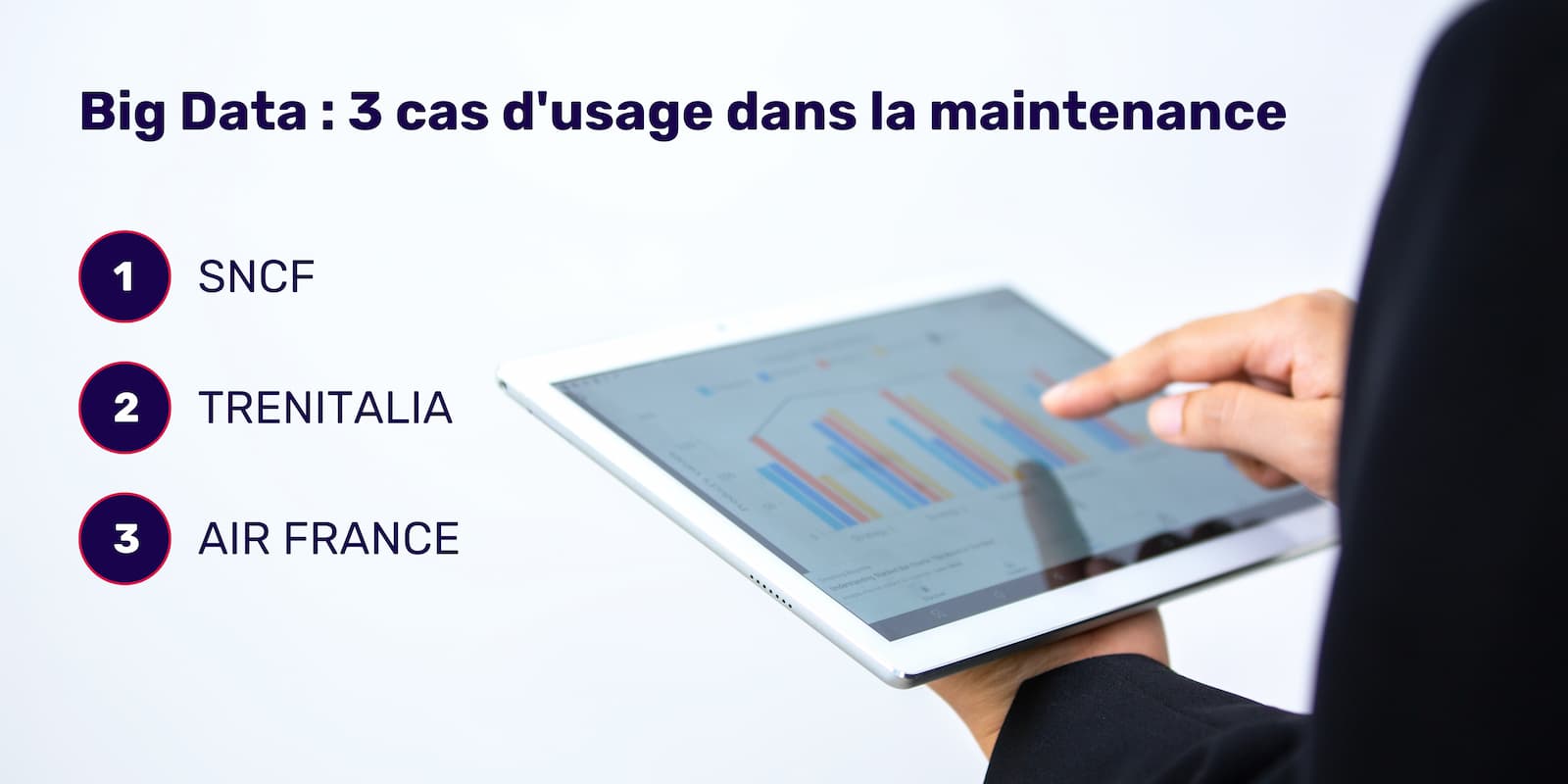Beyond the collection and processing of external data facilitating decision-making, Big Data proves to be powerful.
I. Predictive maintenance
As its name suggests, predictive maintenance aims to alert by anticipating failures and breakdowns that occur in a product, solution, or system through maintenance data. This allows for a real reduction in costs associated with network failures, such as switch malfunctions or fiber cuts, for example. Predictive maintenance can reduce these costs by 10 to 40%, according to Hub One.
The relationship between Predictive Maintenance and Artificial Intelligence
Predictive maintenance relies on artificial intelligence. AI helps the company obtain precise and filtered information about the operating condition of its machines or other equipment. Its advantage lies in automating data processing to avoid repetitive tasks, thereby saving time for employees.
Similarly, artificial intelligence contributes to reducing the risks of errors by automatically detecting malfunctions and sources of errors.
Artificial intelligence and predictive maintenance remain linked and essential for developing one’s business.
Download Ebook on the digital transformation of the automotive industry
Why choose predictive maintenance?
It remains a source of ROI for all companies using this method. It promotes a decrease in maintenance costs that should not be ignored, a reduction in system failures, and therefore a time gain for the company that will not disrupt its activities in parallel. This will significantly improve optimization.
It should be noted that multinational companies in the industrial and manufacturing sector experience an average of 27 hours of machine downtime per month, at an average hourly cost of 450,000 euros, according to a study published on July 1, 2021, by Senseye (a provider of AI-based equipment condition management solutions).
Use case 1 : SNCF
- Use of commercial trains to monitor the network
During its 2nd edition of the “Open Club Innovation” on June 24, the SNCF unveiled its new solutions for predictive maintenance. One of the solutions involves using its commercial trains to monitor the condition of tracks and infrastructure such as signals, switches, or overhead wires.
The “Surveillance by Commercial Trains” project aims to turn commercial trains into true connected objects. They will be tasked with collecting data at each pass. The collected data will be analyzed by an acquisition center and then compared to establish the evolution of the tracks over time.
- Ground and subsurface monitoring
To ensure maximum safety of railway traffic, the SNCF aims to monitor the subsurface. This helps prevent cases of urgent maintenance that could incur significant costs. Thus, a 3D monitoring method has been implemented. It involves analyzing the waves emitted by the passage of trains using sensors placed on the surface. The monitoring can analyze up to 50 meters deep.
II. Preventive maintenance
Another model of anticipatory maintenance is preventive maintenance. Its purpose is to reduce breakdowns related to machines, assets, and equipment. It is already applied in factories, where each connected machine can collect and transmit its own information (age, model, usage duration, quantity of error messages issued, temperature, etc.).
This type of maintenance requires theoretical knowledge of different types of machines, technical expertise, and above all, a method.
Systematic Preventive Maintenance
Systematic preventive maintenance is performed regularly at predefined intervals. These frequencies can be programmed based on the history of breakdowns, relying on the experience of personnel or historical data. Thus, systematic maintenance can be managed by a computerized maintenance management system (CMMS).
This type of maintenance does not require expensive equipment to be carried out. Therefore, it can be costly and tedious in the long run. It is challenging to determine the ideal maintenance frequency for parts. Similarly, it may mobilize technical teams without knowing if it is necessary.
Conditional Preventive Maintenance
It only intervenes when the condition of the asset or machine requires it. It is based on indicators and data to monitor the state of the equipment. This type of maintenance can also use IoT sensors that regularly measure equipment activity (vibration, humidity, lubricant level, noise, temperature, etc.). By transferring this data to a computer platform, any equipment can be monitored, and alerts can be triggered when necessary. It requires the ability to interpret and analyze equipment behavior.
Use case 2: TRENITALIA
Inspired by this practice, the Italian transport company Trenitalia has combined it with machine learning. Its 30,000 locomotives transmit data every 10 minutes and are expected to allow the system to autonomously schedule maintenance team interventions. If the system is in good shape, the scheduled intervention is automatically postponed, but it is anticipated in case of factors that could lead to a breakdown. The goal is to avoid unplanned train immobilizations.
III. Corrective maintenance
Use case 3 : Air France
Corrective maintenance involves rectifying and repairing defective equipment. The goal of this maintenance is to restore damaged equipment.
In aviation, corrective maintenance quickly becomes significant if not anticipated. At Air France, in addition to its preventive use, Big Data primarily enables precisely and rapidly targeting the location of the fault and the part responsible for it. In aviation, the objective is always to avoid grounding aircraft. A profitable aircraft is one that flies!
In this Big Data use case, it allows engineers to intervene extremely quickly and minimally immobilize the aircraft (thus reducing delays and operating costs). It also means that engineers, identifying defects in parts faster and with certainty, can directly work on optimizing problematic components.


